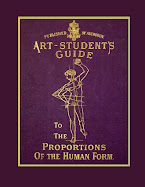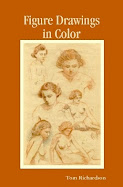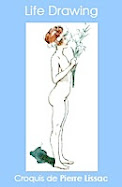Apollo, Apollo
Adonis Athys, Adonis
Cupid, Libera, Bacchus
Venus, Satyr, Figure
This marble, of beautiful workmanship, represents the head of a Muse resembling in general character those of the family of Niobe; the hair, parted along the top of the head, is drawn back on each side, and gathered into a knot behind, and has, probably, been bound by a narrow fillet of metal which no longer remains, but which seems to be indicated by a small channel in the marble at the base of the knot. The head and part of the neck only are antique, the lower part, being modern, is traced in the plate in outline; enough however of the throat remains to prove that the head has been that of a female, and not of Apollo Musagetes, as which it has generally been described. It is true that this deity, in his character of leader of the Chorus of Muses, is represented as very effeminate in appearance and attired in flowing robes like those of a female; and also, that this head is very similar to that of a statue of Apollo, which was purchased of Cardinal Ceppi for the Capitoline Museum, and is engraved in the Museum Capitolinum, fol. torn. iii. tab. 15., but an accurate examination of the throat will remove all doubt as to the intended sex of this fine fragment. It is much to be regretted that, in the description of statues, little mention should be made of any fractures or restorations, and that no indications of such should appear in the engravings.
" A head of Sabina, the wife of Hadrian. The elaborate manner in which the hair of the head is plaited is agreeable to the style of head-dress, which prevailed in the reign of Hadrian, and in that of his predecessor Trajan. The same cast of countenance, as well as the same costume with regard to the hair, is-also found on the medals of this Empress. She died in the year 136 of the Christian aera having been secretly poisbned, as is supposed, by order of her husband. Whether the temper of Sabina really deserved the imputation cast upon her by Hadrian, or not, there is certainly an unusual expression of moroseness in the character of this head." Combe's MS. description. In the Musee Royal at Paris there is a bust exactly similar to the one above described, which is called a portrait of Matidia, the mother of Sabina. There does not appear to be any reason for this appropriation, except the supposed resemblance between the bust and the coins which bear her name, especially in the peculiar arrangement of the hair. This fashion however was common to other personages of the same period, as Plotina, Marciana, Matidia, Sabina. As far as the head-dress can serve as a guide, this bust must be assigned to Sabina; for, though it sufficiently resembles that which appears upon the medals of all, to be acknowledged as a modification of the same fashion, it is identical with that alone, which is seen upon the greater part of the medals of that Empress.
Even of her head-dresses the form is occasionally so far varied as to preclude our placing implicit reliance on that alone, in the appropriation of this bust. It is unfortunate that the nose in these busts is so much injured as to prevent our availing ourselves of that feature in a comparison with the medals, and, with these reasons for hesitation, we do not venture to pronounce positively that the Museum bust is a portrait of Sabina; yet, upon repeated and careful comparisons with the several medals of that Empress, and also with those of Matidia, we certainly are of opinion that it is so. The coins upon which the head-dress of the bust is best represented, are those of large brass which have for their reverse a seated figure of Ceres ; but that which more particularly coincides in character and countenance, is one which also has the hair well drawn up behind and has the reverse of CONCORDIA AUG. The severity of expression which Mr. Combe observes in the bust now under consideration, appears probably much stronger than was originally intended, in consequence of a piece of the lower lip having been broken away. This bust is well executed, and affords an admirable specimen of the extraordinary head-dress worn at the period, and gives an almost painful idea of the time and labour which must have been expended in framing so singular a superstructure. The head only from the upper part of the throat is antique; the nose has been restored, and several small holes disfigure the surface. Mr. Towneley has not left any memorandum of the source whence he derived this monument. Height of antique portion 11 1/2 in.An example from Temple of Appollo Epicurius on mount Cotylion
More images from the Antiqueprintshop.co.uk.
From Annals of the Fine Arts for MDCCCXVIII, Vol III..
Art. XV. A Description of the Collection of Ancient Marbles in the British Museum; with Engravings. Part III. London, 1818.
Thb present volume contains a description of the marbles in the fourth room of the Gallery of Antiquities, and consists of a basso-relievo of Bonus Eventus, engraved by G. Cooke, two plates, one representing the west view of the fourth room, the other the east view of the same room, exquisitely engraved in outline by H. Moses, from drawings by Mr. Henry Corbould: all the others are by various engravers, from the correct and beautiful drawings of our late lamented friend Alexander, of whom Mr. Taylor Combe, the learned editor, says, " we cannot refrain from expressing, though in few words, our sincere regret at the loss sustained by the death of that very able artist, who, in conducting the part allotted to him in this work, was not less distinguished by his zeal than by his talents;" to which we add our most cordial and unlimited assent.
The engravings consist of 1 .the bust of Trajan, by J. Woolnoth. 2. A bronze statue of Hercules bearing away the Hesperian apples, by W. Bromley. 3, One of the feet or supports of an ancient tripod table, by Freeman. 4. A head of Apollo, by Worthiugton. 5. A statue of Thalia, by George Corbould. 6. Ad unknown head, supposed to be that of Arminius, by W. Sharp. 7- A bronze statue of Apollo, by A. Smith. 8. One of the feet or supports of an ancient tripod table in porphyry, by G. Kellaway. 9. A head of Marcus Aurelius, by C. Picart. 10. A bust of Lucius Verus, by W. Finden. 11. A group of Bacchus and Ampelus, by J. T. Wedgwood. 12. A head of the young Hercules, by J. T. Wedgwood. 13. A female head, supposed to be that of Dione, by C. Picart. 14. A statue of Diana, by W. Bromley. 15. A bust of Hadrian, by W. Bromley,
To select any of the above for particular praise, would be" invidious, so excellent are they all in their different styles,*nd so faithful to their originals. The work is truly worthy the great institution which lias published them, and reflects credit on our national character.
The editorial department is a model for archaiological writers ; for unlike the French, and some of our own antiquarian coxcombs, Mr.Combe has admitted no vague conjecture, no absurd theory, no attempt at long descriptions and fine writing. His short essays are brief and learned abstracts of deep study and tedious investigations j not a fact is stated without its original authority being quoted in a note, and the solid matter of each single page would, in the French style, easily make a decent chapter as long as Le Roy, Millin or Visconti.
A Description of the Collection of Ancient Marbles in the British Museum: With Engravings...
A Description of the Collection of Ancient Terracottas in the British Museum: With Engravings
A Description of the Collection of Ancient Terracottas in the British Museum: With Engravings





















































